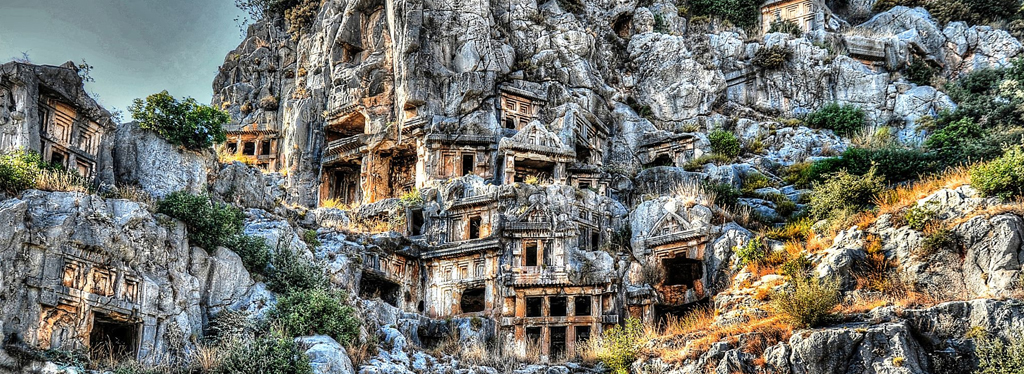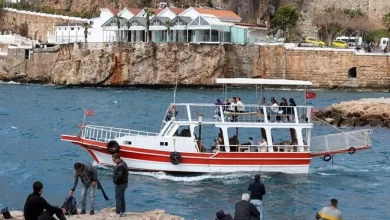- Things to do in Myra
Myra is now known as a Lycian city located in the Mediterranean region. The ancient city of Myra is an ancient city that attracts constant attention both in summer and winter. The ancient city of Myra is among the most visited historical buildings of the Mediterranean. Visiting hours vary according to the periods. Myra ancient city, which was built in the Lycian region, was established on the alluvial plain. Excavations are still going on today on the ancient city of Myra. As a result of the studies, it was observed that there was a theater in the ancient city of Myra. In this ancient city, where Greek culture is dominant, finds specific to Greek gods are also found. At the same time, there are two Nekrapols belonging to Lycia in the ancient city of Myra. The ancient city of Myra was under the Alluion deposits. These sediments and ruins belonging to the Roman and Greek culture remained under the city. A book was published in 2010 for this ancient city built on a fertile plain. Myra ancient city was besieged many times during the ancient times. As a result of the excavations, findings of the sieges were also found.
The biggest development of Myra took place in the 2nd century. Myra, one of the densely populated cities of the Lycian Union as a metropolitan city, was built and restored with the efforts of the rich people of Lycia. Maintaining its importance in the Byzantine Period, Myra was a pioneering place for all cities in terms of religion as well as administration. After the 7th century, the importance of Myra decreased due to the increase in natural disasters and the erosion caused by the Demre Stream and of course Arab occupations, and it turned into an abandoned village in the 12th century. Those ruins that exist today constitute the theater and the rock tombs on both sides.

History of Myra Ancient City
The ancient city of Myra is a city known to have existed since the 5th century BC. There are rock tombs in the ancient city of Myra, which is a historical city of the Lycian Union. It is known that the ancient city of Myra has shown a great development since the 2nd century. The rich people of the Lycian union of the period built many buildings on the ancient city of Myra and lived here. During the Byzantine Empire, the ancient city of Myra was used for religious rituals. Therefore, there is also a church in this city.

Places to visit in Myra Ancient City
There are historical buildings and religious places to visit in the ancient city of Myra. First of all, you can see sculptures and busts belonging to Greek culture and specially made for Greek goddesses in this city. It is possible to observe the church, which was built in the Byzantine period, in the ancient city of Myra. The rock tombs from the Lycian period are among other places to be seen in the ancient city of Myra. Visiting times to the ancient city of Myra differ in winter and summer periods. In the summer period, entrance is provided between 08:30 am and 07:30 pm, in the winter season, entrance to the city is provided between 08:30 am and 05:30 pm.
In the ancient city of Myra, the museum card is valid. If you have a museum card, you can visit this historical ancient city free of charge.
How to get to Myra Ancient City ?
In order to reach the ancient city in Antalya’s Demre district, you will take the buses departing from Antalya Bus Station to Demre. When you reach Demre district center, you can reach the place by taxi, which is about 5 km away. Entrance fee here is 30 lira. It closes at 05:00 pm in the winter in the evening. In other seasons it is open until 07:00 pm.






